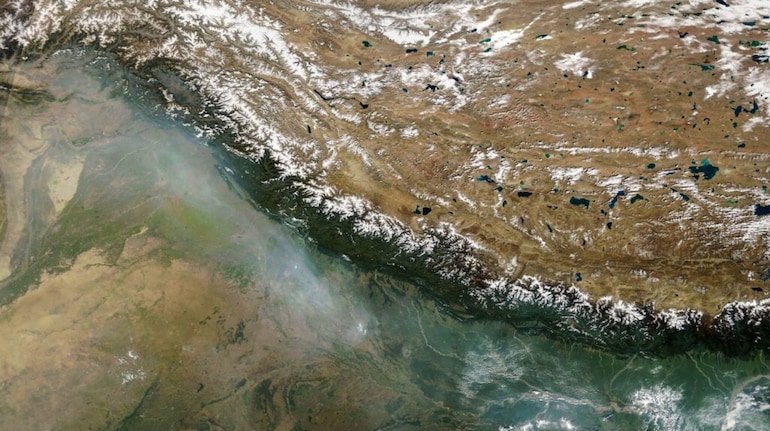



The national capital was hit by an earthquake of magnitude 4.0 on the morning of February 17, creating panic in Delhi and surrounding areas. The sudden and strong tremors felt in the city, despite the low magnitude, was on account of two factors—the epicentre was in Delhi and the quake was shallow-level one, as per experts.
Being closer to the surface meant the impact of the 4.0 magnitude earthquake that struck at 5.36 am was stronger than that of a higher-magnitude one, said experts. Shallow earthquakes typically are within the first 50 km of Earth’s surface. On the other hand, deep earthquakes occur 300 to 700 kilometres below the surface. Shallow earthquakes cause more damage as the resulting shock waves are stronger.
“There are very shallow-level earthquakes, whose focus is hardly 5 km. So, these shallow-levels earthquakes (like the one that hit Delhi on February 17) are not very common,” Tapas Biswal, a retired professor of structural geology at the Indian Institute of Technology-Bombay, told Moneycontrol.
“The earthquake probably (happened in Delhi) because of faulting. There would have been a fault which is passing through Delhi,” Biswal added. A fault is a fracture or zone of fractures between two blocks of rock, or on a larger geographical scale, tectonic plates.
Another factor behind residents feeling the tremors strongly was proximity. The epicentre of the earthquake was near Durgabai Deshmukh College of Special Education in Dhaula Kuan, central Delhi, according to the National Center for Seismology .
Delhi is located within Seismic Zone IV, which is considered prone to earthquakes due to its proximity to the Himalayan collision zone. The world's highest mountains were created when the Indian Plate rammed into the Eurasian Plate millions of years ago. These geographical forces are still in play.
“Delhi earthquake's epicenter was almost Delhi itself. I don't remember ever seeing the epicenter of an earthquake being so close to Delhi itself. Scary and the closest warning sign to revamp the city for being earthquake resistant. As of now, Delhi is barely earthquake ready,” Srijan Pal Singh, the former advisor to the 11th President of India and founder of Kalam Centre and Homi Lab, said on microblogging site X.
“You see earthquakes often release two separate waves—the P (primary) wave and the S (secondary) wave (secondary)..P-waves travel faster than S-waves (which cause most of the shaking). We heard the rumbling and a loud boom before feeling the earthquake as the P wave hit us first - and in large intensity. The underlying reason was the crumbling tectonic plates below our feet which caused these waves. And since you were so close to the epicenter you were able to sense it,” Srijan added.
Necessary precautions
The strong tremors felt early on February 17 morning saw people in the region rush out of their homes. While this is a natural reaction, according to the National Centre for Seismology, remaining calm is of utmost importance during an earthquake.
During such an event, the safest place is an open space, away from buildings, it added. If you are indoors, take cover under a desk, table, bed or in doorways and against inside walls and staircase, and stay away from glass doors, glass panes, windows or outside doors. Do not rush to go out of the building, to avoid a stampede-like situation.
If you are outside, move away from buildings and utility wires, and stay there till the vibrations stop. Additionally, if you are in a moving vehicle, stop as quickly as possible and stay in the vehicle.
Do not use candles, matches or other open flames.
Discover the latest Business News, Sensex, and Nifty updates. Obtain Personal Finance insights, tax queries, and expert opinions on Moneycontrol or download the Moneycontrol App to stay updated!
Find the best of Al News in one place, specially curated for you every weekend.
Stay on top of the latest tech trends and biggest startup news.